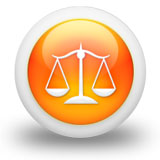We need your consent to use the individual data so that you can see information about your interests, among other things. Click "OK" to give your consent.
ASTM F1269-89(2001)
Test Methods for Destructive Shear Testing of Ball Bonds
STANDARD published on 1.1.2001
The information about the standard:
Designation standards: ASTM F1269-89(2001)
Note: WITHDRAWN
Publication date standards: 1.1.2001
SKU: NS-49703
The number of pages: 9
Approximate weight : 27 g (0.06 lbs)
Country: American technical standard
Category: Technical standards ASTM
Annotation of standard text ASTM F1269-89(2001) :
Keywords:
ball bonds, shear testing, wire bonding, ICS Number Code 25.160.40 (Welding joints and welds)
Additional information
| 1. Scope | ||||||||||
|
1.1 These test methods cover tests to determine the shear strength of a series of ball bonds made by either thermal compression or thermosonic techniques. Note 1Common usage at the present time considers the term "ball bond'' to include the enlarged spheriodal or nailhead portion of the wire, (produced by the flameoff and first bonding operation in the thermal compression and thermosonic process, or both,) the underlying bonding pad, and the ball bond-bonding pad interfacial-attachment area or weld interface. 1.2 These test methods cover ball bonds made with small diameter (from 18 to 76-µm (0.0007 to 0.003-in.)) wire of the type used in integrated circuits and hybrid microelectronic assemblies. 1.3 These test methods can be used only when the ball height and diameter are large enough and adjacent interfering structures are far enough away to allow suitable placement and clearance (above the bonding pad and between adjacent bonds) of the shear test ram. 1.4 These test methods are destructive. They are appropriate for use in process development or, with a proper sampling plan, for process control or quality assurance. 1.5 A nondestructive procedure is possible; although it may be contra indicated due to the possible interference with adjacent wire bonds and microcircuit components. 1.6 The values stated in SI units are to be regarded as the standard. The values given in parentheses are for information only. 1.7 This standard does not purport to address all of the safety concerns, if any, associated with its use. It is the responsibility of the user of this standard to establish appropriate safety and health practices and determine the applicability of regulatory limitations prior to use. |
||||||||||
| 2. Referenced Documents | ||||||||||
|
We recommend:
Updating of laws
Do you want to be sure about the validity of used regulations?
We offer you a solution so that you could use valid and updated legislative regulations.
Would you like to get more information? Look at this page.




 Cookies
Cookies
